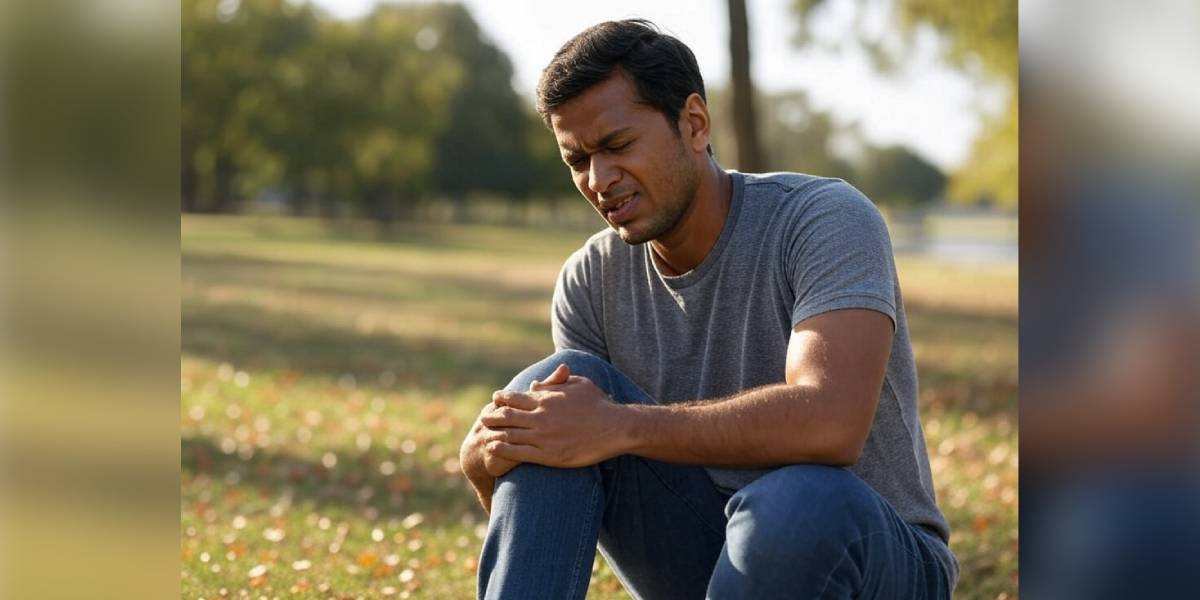Bengaluru's Dr. Lohith Reddy offers a groundbreaking treatment for osteoarthritis, using low-dose radiation to relieve knee pain in just 30 seconds, with no incisions, anaesthesia, or downtime
Published Apr 10, 2025 | 7:00 AM ⚊ Updated Apr 10, 2025 | 9:26 PM

Doctors said there are combinations of well-understood psychological and behavioural factors behind joint pain.
Synopsis: Bengaluru’s Dr. Lohith Reddy, Consultant Radiation Oncologist at HCG Hospitals, introduces Restorative Benign Radiotherapy, a groundbreaking treatment using low-dose radiation to relieve osteoarthritis pain. With no incision, anaesthesia, or downtime, this world-first therapy promises a game-changing solution for millions suffering from chronic joint pain, especially the elderly, marking a new era in osteoarthritis management
Imagine walking into a hospital with knee pain and walking out 30 seconds later with great relief — with no incision, no anaesthesia, and no downtime. That’s the promise Bengaluru’s Dr Lohith Reddy, Consultant Radiation Oncologist at HCG Hospitals, is offering. This treatment could be a game-changer for millions of Indians suffering from osteoarthritis.
HCG Hospitals is introducing Restorative Benign Radiotherapy — a cutting-edge treatment that uses low-dose radiation, traditionally meant for cancer, to relieve osteoarthritis pain.
Speaking to South First, an excited Dr Reddy said, “This is not radiation for cancer — it’s radiation for healing.” He calls it Restorative Benign Radiotherapy — a new clinical paradigm that repurposes precision oncology to manage osteoarthritis and restore lives.
This world-first introduction in Asia and the Middle East by HCG could mark a new era for millions suffering from chronic joint pain, particularly the elderly.
If you–or your parents or grandparents–are dealing with stiff knees, swollen joints, and that familiar ache that worsens with age, this treatment could be a much-needed alternative to long-term painkillers or risky surgeries.
Dr Reddy explains that joint replacement surgery remains the gold standard in osteoarthritis with severe joint destruction and loss of mobility. For such cases, surgical interventions offers long term mechanical correction and structural repair.
However, a large majority of patients in India present with moderate-stage disease (grade 2 or 3) often experiencing debilitating pain, but are not yet candidates for surgery. These patients may suffer for years with limited options.
It is in this population that RBR offers a safe, evidence-based bridge–revealing symptoms, delaying progression, and potentially deferring the need for surgery. “Our goal is to intervene earlier–to give patients a chance at long-term relief and functional improvement before surgery becomes inevitable,” explains Dr Reddy.
Ravindranath, 61 year old patient from Bengaluru who has undergone this therapy said, “from past three years I have third stage of osteoarthritis and am suffering from pain in my legs and through Dr Lohith I heard about this low dose radiotherapy. I have now completed six doses of this treatment and pain is relieved by almost 90-95 percent and I feel many people can benefit from this treatment.”
Another 62 year old patient Venkatesh said “I have taken six radiation therapies and my osteoarthritis pain has given about 90-92 percent relief.”
Yet another patient G R Shamalamba said she was taking pain killers for almost 10 long years every single day and needed support from someone else to even stand up on her own. However, after six doses of low dose radiation she says, “pain is almost reduced and even hunch walking is gone. My quality of life is entirely different now and I can even stand on my own, without any support,” she added.
Unlike painkillers that merely mask symptoms, this therapy claims to tackle the root cause of osteoarthritis–chronic inflammation, immune misfiring, and tissue scarring.
The low dose radiation, Dr Reddy explains, suppresses inflammation-causing cytokines, tweaks the immune response from harmful to healing by converting harmful M1 macrophages to healing M2 types, reduces fibrosis and halts cartilage degeneration, improves mobility by reducing joint stiffness and enhances joint flexibility.
“This therapy doesn’t just reduce pain–it changes the disease trajectory. We are not just managing symptoms. We are restoring independence and quality of life,” Dr Reddy explains.
Working alongside Dr Krithikaa Sekar and Dr Pichandi Anjenayan, Dr Reddy’s team has created India’s first structured protocol for this treatment:
Dose: 0.5 Gy per session X 6 sessions
Time per session: Only 30 seconds
Technology: MRI-CT guided radiotherapy to hit the target precisely
Safety: No exposure to bone marrow, ensuring minimal risk.
Dr Reddy clarifies that this is not an experiment–it’s evidence based, with European countries like Germany already treating over 100,000 patients with similar protocols.
Multiple studies – published in the International Journal of Radiation Oncology and Orthopaedic Journal of Sports Medicine – as well as international guidelines say yes.
Less than 0.2 percent risk of second cancer in 25 years due to exposure to radiotherapy.
(German studies, 100,000 plus patients)
No added risk risk for those above 60, as per DEGRO guidelines.
No harm to bone marrow, as knees and ankles don’t house red marrow. It is not exposed.
MRI-CT guidance, Dr Reddy says, ensures that radiation hits only where needed, with almost no spill over.
As India’s population ages and joint pain becomes a daily reality for many, this kind of low-risk scientifically validated, and quick treatment, doctors claim could fill the gap between painkillers and surgery.
“With Restorative Benign Radiotherapy, we are not replacing surgery–we are filling a critical gap. For the millions stuck between medication and surgery, this is hope, backed by science,” said Dr Reddy.
HCG is applying this approach to treat a wide range of non-cancerous inflammatory and fibrotic conditions. Interestingly, this repurposed radiotherapy is also being applied to treat several other non-cancerous conditions like Tennis elbow, Achilles tendonitis, frozen shoulder, plantar fasciitis, heel spurs, chronic bursitis and even stubborn conditions like Dupuytren’s disease and keloids.
Dr Reddy says these are all chronic pain conditions that typically come with frustratingly few treatment options–until now.
(Edited by Ananya Rao)
